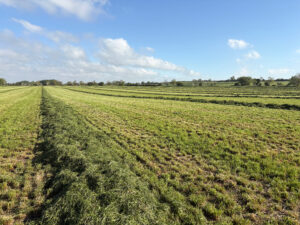As you’d expect, the large-scale farming industry uses huge amounts of water.
In fact, agriculture accounts for 70% of all global water consumption, and as the world’s population increases, so too does the quantity of water required to produce enough food and products for everyone’s needs. Water shortages are a problem, and all sectors are researching and developing ways to tackle this issue. We’ve been taking a closer look at how the large-scale farming industry is finding ways to reduce its water usage.
Hydroponic farming
Indoor farming in greenhouses has been around for centuries, but the new trend for climate-controlled hydroponic farms on a huge scale is set to revolutionise not only the use of space when we produce food, but also the amount of water saved. According to the Royal Horticultural Society: “Hydroponics is the science of growing plants without using soil, by feeding them on mineral nutrient salts dissolved in water.”
In a hydroponic farm, plants are grown on racking systems in greenhouses, warehouses and purpose-built buildings, benefitting from artificial light, heating and cooling to provide optimal growing conditions all year round. Even though they are so heavily dependent on water, hydroponic farms actually use significantly less water than greenhouses or open fields because it is all recirculated on a closed system via a reservoir. Some indoor farms have reported a 90%-95% decrease in water usage vs open-field farming, and studies have found that lettuces grown hydroponically use only 8% of the water needed to grow them outside.
Hydroponic farming has huge benefits for the environment too. Water run-off from open-air agricultural farms can result in high levels of nitrogen and phosphorus in river and ground water in the surrounding areas, something that won’t happen with the closed system of hydroponic farms. The additional benefit is that indoor farms rarely need to use pesticides and herbicides, lessening the toxic effects on wildlife.
Smart farming
IT is set to play a key part in the battle to save water in large-scale farming. In the Netherlands, specialists in solutions dedicated to the Internet of Things joined forces with specialists in soil moisture solutions, and together they are developing an IT solution that has the potential to reduce water consumption by up to 30%. By taking precise soil moisture measurements, farmers could improve water conservation at the same time as maintaining soil health and improving crop yields.
Agricultural Transition Plan
The UK government’s Agricultural Transition Plan has been developed to help all farmers with a Sustainable Farming Incentive, with soil health being the current focus as that is where everything connected with successful farming starts. The Sustainable Farming Incentive will accelerate the large-scale adoption of more sustainable approaches on all types of farms, building on the excellent practices that are already happening on many farms. The scheme will be designed to be accessible, relevant, and attractive to the widest possible range of farmers, to support at least 70% of eligible farms to take part by 2028. From 2022, the scheme will reward farmers for taking measures to reduce water loss and improve water quality.
Farming for 1.5o
In Scotland, a panel of farmers, academics and NGO representatives have just published Farming for 1.5o – a consensus roadmap for Scottish farming practices to enable farmers, scientists and environmentalists to work together to achieve the changes needed, including the climate change commitments set by the Scottish government. The panel concluded that the adoption of agroforestry, which it describes as: “the growing of woody perennials on the same piece of ground as an agricultural crop, either livestock or crops”, as well as the planting of hedgerows will not only help biodiversity, but also control erosion and improve water availability and quality.
Inventors
It’s not just big businesses that are making progress when it comes to agricultural water saving. A retired farmer has invented the Wheel Track Roller Combi which is designed to help soil water retention, with tests showing that it decreases water run-off from around 24% to just 2%.
AMR and Water efficiency
There are always steps that farms of any size can take to conserve water, which have the added benefit of saving the farm money. The most effective solution is the installation of Automatic Meter Reading equipment, which will enable you to assess water use as well as the success of any water efficiency measures you take. Using the data, you can monitor water usage more closely. Check out our Water Efficiency Guide for other ideas on how to save water and alternative water sources, or book a water efficiency audit for expert advice on water reduction strategies.
You can read more about the services we provide and how to switch supplier. Reach out to us today.



